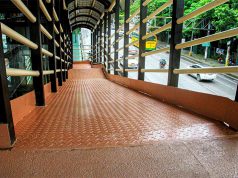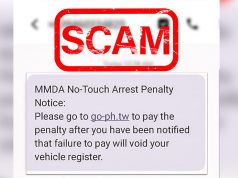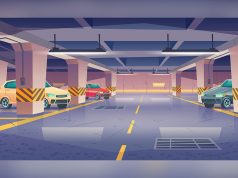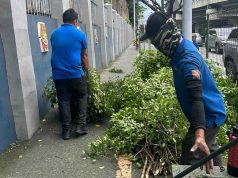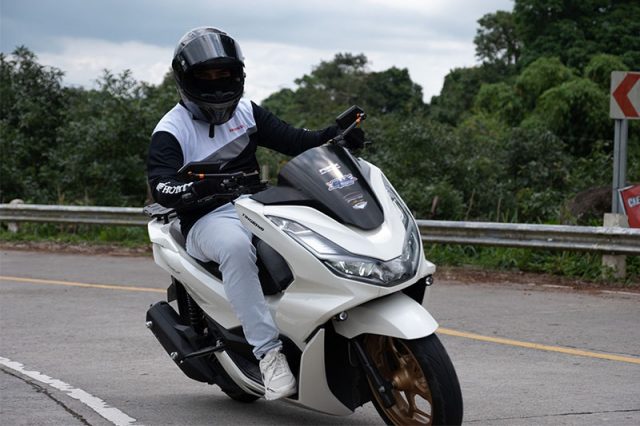
Rainy season is upon us, which means slippery roads and decreased visibility for motorists.
Motorcyclists usually bear the brunt of the weather because unlike four-wheeled vehicle users, the riders are not in an enclosed space.
This makes them more vulnerable to weather elements like rain, thunders and winds.
Apart from that, motorcycle riders also have to deal with wet roads and reduced visibility.
This makes motorcycling riskier and more challenging in the wet season, which is from June to November.
State weather bureau PAGASA also said Filipinos should expect two or three tropical cyclones to enter the country’s weather monitoring domain (or the Philippine Area of Responsibility) each month in August, September and October.
Such weather disturbances are known to dump rains or enhance the southwest monsoon (habagat), which usually occurs from June to October.
To keep motorcycling safe amid heavy downpours, the Motorcycle Development Program Participants Association Inc. (MDPPA) and Japanese motorcycle manufacturer Honda shared tips for riders this rainy season:
Invest in high-quality gear
Apart from durable helmets, riders should also invest in appropriate riding gear like riding jacket, pants, shoes and gloves to ensure they stay dry as much as possible.
They can also wear reflectorized rain gear (raincoats and rain pants) to be more visible to other motorists during rains.
Riders can likewise invest in a helmet visor with anti-fog to prevent fogging and maintain a clear vision throughout the downpour.
They can also wear waterproof, non-slip riding shoes to prevent their feet from slipping off as they ride.
The Metro Manila Development Authority likewise advised riders to wear raincoats for protection.
Paalala sa mga nagmomotor:
Hindi ipinagbabawal ang pagsilong para isuot ang kapote kapag umulan, ang bawal ay ang pagkukumpulan sa gitna ng lansangan at nahaharangan na ang mga dumaraang motorista.
#mmda #kapotehuwagkamote pic.twitter.com/OinWUxl703
— Official MMDA (@MMDA) August 2, 2023
Conduct pre-ride motor inspection
MDPPA suggested that riders to conduct a pre-ride motor inspection with the acronym “T.C.L.O.C.S.”
T — Check air pressure of tires and wheels and examine if there are damages to the spokes.
C — Check if the controls of the brakes or clutch levers, switches, cables, and others work smoothly.
L — Assess brightness of the lights and the functionality of the battery.
O — Verify levels of motor oil and fluid.
C — Inspect chassis or related parts such as bolts, nuts, and drive chain.
S — Examine motor’s side stand and center stand.
Honda also suggested that riders should see to it that the following are complied:
- Make sure that engines are running in good condition
- No oil leaks in the front and rear shocks
- Tires have adequate treading
- The motor has enough brake fluid
- Check if brake pads are worn out or not
Plan your route well
Since motorcycling poses more danger in rainy conditions, the MDPPA suggested that riders should plan their routes and avoid hazardous areas prone to flooding, standing water, or poor drainage.
They can plan for alternative routes which have better road conditions.
A motorcycle like Honda’s PCX160 – ABS model can handle such conditions since it has the innovative Honda Selectable Torque Control (HSTC) that prevents rear wheel slip.
It lets riders coast safely, especially on slippery roads or uneven terrain.
Stay alert and focused
Rainy season requires riders to increase their alertness and anticipate potential hazards, especially since they are not in enclosed vehicles.
The MDPPA suggests that they should watch out for pedestrians, cyclists and other motorists affected by the rain.
They must also keep the following fundamentals in mind: Recognize, judge, and react accurately.
According to MDPPA, most motor accidents can be avoided if the rider has accurate recognition and does not commit errors in their judgment.
This includes another fundamental that riders must remember: Avoid overspeeding.
Honda said that driving at higher speeds on wet roads can compromise their handling ability and lower their braking response time, making them more prone to accidents.
For safer riding, motorists can look at the Honda PCX160 which has two variants with exceptional braking features.
The PCX160-CBS variant comes with the Combi Brake System or CBS. This variant is engineered to provide about 20% braking power to the front brakes when engaging the rear brake lever, leading to more efficient braking control.
On the other hand, the PCX160-ABS variant is equipped with front-wheel Anti-Lock Braking System or ABS which adjusts the braking pressure accordingly to prevent the wheel from locking. It also assists with maintaining the stability of the bike.
Apart from this, the Honda PCX160 motor is loaded with modern styling cues, a 157cc 4-stroke, Liquid-Cooled, 4-Valve, Single Overhead Cam (SOHC) eSP + engine that makes riding exciting.





